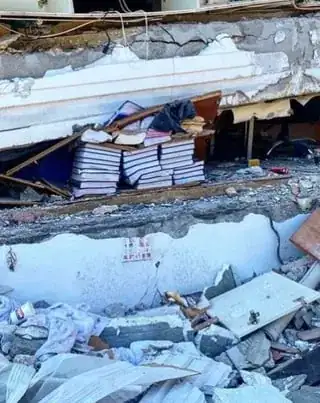I've watched an experiment where they compress a book with a hydraulic press, and the book appears to stay relatively intact under that pressure. It is mentioned that the hydraulic press has a 100-ton pressing capacity.
You can watch it from minute 4 here:
https://www.youtube.com/watch?v=AmFe7ECTGQI&t=240s
I've also read somewhere that stacking books under a bed is a potential life-saving precaution if the building were to collapse in an earthquake; as books can withstand immense pressure and can create a pocket of space beside the bed where you can lie down. I've even found a photo depicting it:
A book doesn't deform or break like other solid materials. Of course, there can be tough metals that can stay intact under pressure/loading but a piece of paper is something flimsy. Why are books tough under loading even though they're composed of fragile components? How can we explain the physics behind this phenomenon?
I've also thought that it might be related to chemistry and the structural components of paper like cellulose; but it is mainly the stack of paper that makes a book sturdy.
Another factor that came to my mind is tensile strength but I'm not sure how to explain it within this context. It could be that the tensile strength increases when pieces of paper or books stack up.
